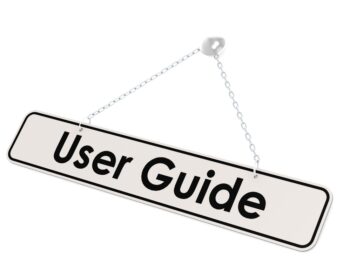2,000 Injured Worked Studied for 4 Years After Settlement
I recently read article from Risk & Insurance Online, where they state that the Boston-based Workers Compensation Research Institute looked at more than 2,000 workers injured in Michigan in 2004 who received lump-sum settlements. The researchers followed their employment experience for the next 4 years. The study found that:
- Three-quarters of the injured workers who received lump-sum settlements did not change their employment status, “which means that many of those who were employed at the time of the lump sum stayed employed and those that were not employed remained unemployed”
- Of those who did change their employment status, nearly a third who were employed at the time of the settlement left work, and nearly a fifth of those who were not employed attained employment after the settlement.
- Average employment in the sample increased from 25% of workers at the time of the lump sum settlement to 32% of workers one year after a settlement. “The exception is older workers who experienced a decline in employment after a settlement.”
“This is an important study because we need to find out whether settlements discourage return to work for injured workers who want to return to work or assist them in closing this chapter of their life and moving on with their career” said Bogdan Savych, the author and a public policy analyst at the WCRI. [WCx]
Only small percentage of Employees Looking for an Early Retirement
The common consensus or stereotype among adjusters could be that workers trying to obtain a lump sum settlement are in it for the wrong reasons, looking for a way to fund an early retirement and remove themselves from the workforce forever. Sure this could be true, but obviously this is for a small percentage of the injured workers looking for a lump sum settlement according to this study.
There could be a ton of variables, including age of the worker, type of injury, severity of injury, post-injury medical and physical limitations that could hinder a gainful return to work in the occupation that the worker desires, overall economic reasons forcing a return to work, and so on.
Adjusters forget that a person’s life does not end after a settlement has been reached, rather it is just the end of the file for the adjuster. Obviously younger workers could rarely sustain a prosperous life from the time of their settlement to their death, meaning that they would have to stretch those settlement monies over the course of their whole lifespan. On the opposite side, and as the study shows, older workers nearing retirement would rarely return to full time gainful employment after a settlement, since they may not need to work anymore, but again this could vary on Pensions, 401ks, savings account amounts, and the like. It is feasible to state that maybe older workers who wished to retire after a settlement still could not do so, based on their own personal economic needs.
In General, People Return to Work After Receiving a Settlement
Looking at this from a general broad perspective, this study proves that people return to work after receiving a settlement for their comp injury. The adjuster has incentive to attempt to resolve the case as soon as they can, because once the settlement is completed the case is off the books of the carrier, and the file is closed forever, if a full/final settlement is to be performed. Plus it ends the case for the injured worker and the employer, and everyone can move on with their life.
Not Considered in Study is Various Ways to Settle a Case
One thing this study did not look at which is important is the various ways to settle a case, including an indemnity-only settlement, which keeps medical open. This is becoming more and more of a trend, just because it closes one of the expense doors, wage loss, and the adjuster can settle the medical exposure at a later date once a clamant slows down on treating and nears Maximum Medical Improvement. Making this settlement more common is the involvement of Center for Medicaid and Medicare Services and the need for a Medicare Set Aside to resolve all aspects of a claim if a person’s injury is reportable to Center for Medicaid and Medicare Services because they are on Social Security. If the worker is billing Medicare for their treatment in error, then there is a huge lien to address with Center for Medicaid and Medicare Services, and this can involve many headaches, and the many months of time that have to go by while the carrier negotiates with Medicare on what is their responsibility to pay, and what is the responsibility of Medicare.
Another option is a structured settlement, where an injured worker receives payment from a third party in excess of what a carrier pays to fund the structure, providing an incentive to the injured worker to take this type of settlement because in the end they will net more monies than if they just took a check from the carrier to settle. The downside for the worker is that they do not get all of the settlement money upfront, but rather in monthly payments over a specific period of years, with interest attached. [WCx]
Summary
Speaking generally, the study proves that a worker will indeed return to work after a settlement is obtained. What the study fails to take into account is the several factors that go in to accepting a settlement, and then having to either return or not return to the workplace. Making it more complicated is the varying types of settlements that are out there, and becoming more and more popular as conditions warrant. I believe the most important thing to take away from this study is that when considering settlement; adjusters should not look at it as the worker looking for an early exit out of the workforce. Instead look at it as a way of resolving the claim, so all parties can move forward.
Sure, if adjusters are pessimistic and are viewing the settlement only as a way for the worker to obtain a lifelong vacation, this can hinder negotiation. Instead adjusters should put themselves in the boots of their injured claimants. What would they do if they were faced with these options, and how can you make it be the most attractive as a way to end a claim? Should it be lump sum, structured, indemnity-only, or anything else? Is the claimant in need of lifelong medical care, or have they reached Maximum Medical Improvement and they are as good as they are ever going to be? And no matter what the answers are to these questions, what type of settlement would benefit all parties? It is when we answer these questions, and place ourselves on the other side of the fence, that we can settle claims in a beneficial way to all parties, and move on to the next challenging claim that awaits us.
Author Rebecca Shafer, JD, President of Amaxx Risk Solutions, Inc. is a national expert in the field of workers compensation. She is a writer, speaker, and publisher. Her expertise is working with employers to reduce workers compensation costs, and her clients include airlines, healthcare, printing/publishing, pharmaceuticals, retail, hospitality, and manufacturing. She is the author of the #1 selling book on cost containment, Workers Compensation Management Program: Reduce Costs 20% to 50%. Contact: RShafer@ReduceYourWorkersComp.com.
Editor Michael B. Stack, CPA, Director of Operations, Amaxx Risk Solutions, Inc. is an expert in employer communication systems and part of the Amaxx team helping companies reduce their workers compensation costs by 20% to 50%. He is a writer, speaker, and website publisher. www.reduceyourworkerscomp.com. Contact: mstack@reduceyourworkerscomp.com.
WORKERS COMP MANAGEMENT MANUAL: www.WCManual.com
Do not use this information without independent verification. All state laws vary. You should consult with your insurance broker or agent about workers comp issues.
©2012 Amaxx Risk Solutions, Inc. All rights reserved under International Copyright Law. If you would like permission to reprint this material, contact us at: Info@ReduceYourWorkersComp.com.














